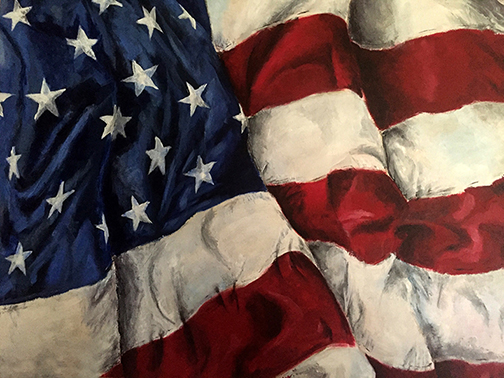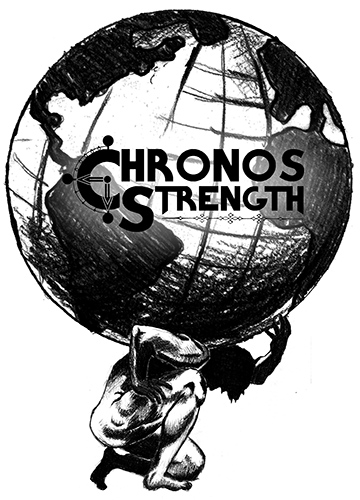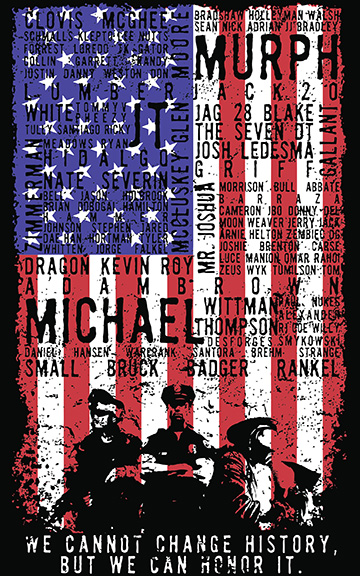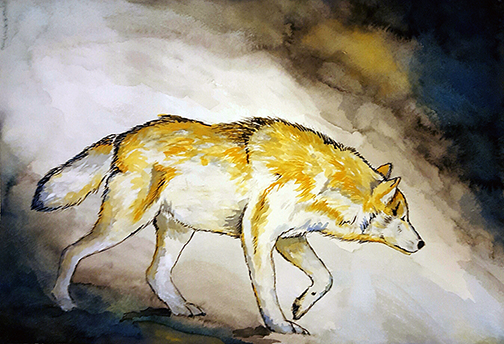If you follow American weightlifting, you probably know Caine “The Dragon” Wilkes for his string of National Championships, appearances in international competition, 500+ pound clean & jerks, and amazing hair. He’s also one of the more thoughtful, observant athletes you’ll ever meet, and I was lucky enough to color commentate with him for a session at the 2016 RVA Open in Richmond, Virginia. He’s one of the most cerebral people I’ve met in the past year — and he just happens to be the strongest weightlifter in North America.
Caine is constantly finding the connections between weightlifting and other aspects of life, and his recently-launched design and illustration brand — Quiet Guy Graphics — is perhaps the prime example of that connection. When he’s not training to represent the USA in weightlifting’s biggest competitions, Caine hones his skills as a designer, illustrator, and artist. I caught up with Caine to talk about weightlifting, his art, and how the two inform each other.
Images courtesy of Caine Wilkes / Quiet Guy Graphics
1. A lot of our readers know you for multiple National Championships, World Teams, Pan American Championships, etc. But you’re also a talented artist and designer! How did you get started in illustration and graphic design?
Well, I’ve been doodling since I can remember, and I’ve always enjoyed creating images and cartoons. Eventually, this led to taking art classes in grade school, and then art being one of my two majors in college (the other major was English). While at college I focused on drawing and design, and I was able to hone my skill in those areas. Along with that, my family owned a CrossFit gym during that time, and I was able to use my illustration and design knowledge for the gym’s shirts, business cards, flyers, and more. So I’d been into art my entire life, but the necessity for a designer for our small business is what really helped me get into graphic design specifically.
After a bit, a few friends and local small businesses started to ask for design and art work, and more recently, I decided to start offering those services to a broader audience. And that led to my graphic design business, Quiet Guy Graphics.
2. Do you see yourself as a weightlifter who illustrates or an illustrator who lifts weights? Why?
That’s really tough to answer, as the fields are so different! I’d say a lot of my focus lately has been on weightlifting. My dad, who is my coach, has reminded me before that you can be an illustrator at any point in your life, but a physically demanding sport like weightlifting can’t be done like that. To be an elite weightlifter, you need to be a weightlifter while you’re young. So that’s how I’ve operated balancing lifting and art so far: weightlifting takes precedence.
However, I’ve always talked about being an artist and storyteller, and lifting was just another medium for me to create and narrate.
3. Do you do a lot of illustration and/or design work that relates to lifting? Do you prefer that, or projects that focus on other topics?
I’ve done a lot of artwork related to weightlifting, and although I do enjoy a broader range of subjects and themes, weightlifting will always be one of my favorite subjects to draw from. In my artwork, I like to explore the “quiet strength” in weightlifting, how in any single moment, there is tremendous power in a lift. However, at the same time there is a necessary finesse, where the athlete must be technical at the same time as being powerful. I think this dynamic in weightlifting between technique and strength has always intrigued me, and it leads to art and illustrations depicting that dynamic.
The same goes in design works; many of the designs I’ve done for small businesses or for friends have often been weightlifting or strength-related, and it’s great to work from that. Still, I do appreciate the challenge of a project that I’m not entirely familiar with. The project becomes a learning lesson as well, learning the basics of the business or concept you are designing for; that helps strengthen and unify the design or logo you’re making for a client.
4. Are there any skills you’ve learned as an artist and designer that have influenced your weightlifting? Or vice versa?
There are several lessons I’ve learned in weightlifting that have lent to my work ethic in art and design. In weightlifting, I definitely have learned the need for a daily grind, a constant and persistent pushing for progress, despite not always seeing the progress. In art, its very similar beginning a painting; at the start the underpainting looks nothing like the finished product, but adding layer upon layer eventually gets you a complete piece of artwork. But the process doesn’t always show the work, just like in weightlifting. So I’ve learned in both disciplines to enjoy the journey and process that gets you to your goals, or to a complete work of art.
5. Got to ask — are you training for weightlifting right now? What are your near-future goals in the sport? Long-term goals?
Yes! I am still training in weightlifting. I took it easy this summer to recuperate from some nagging aches and pains, but I plan on competing for another four years at least. My goals are to make the 2020 Olympic team, and contribute as best as I can to ensure we send multiple men to the Olympics then. Also, I’m looking to take the American records in the superheavyweight class, currently held by Shane Hamman. They’re long standing records, so claiming those records would be quite a feat. Along with that, my main goals have always been to have fun and to keep improving. So I’ll be working on that over the next few years as well!




